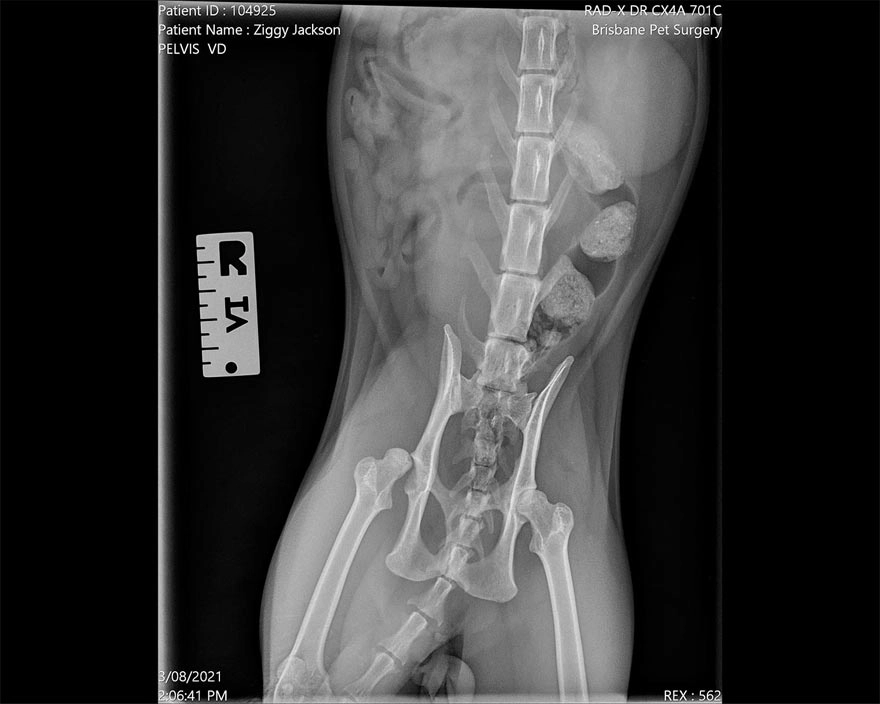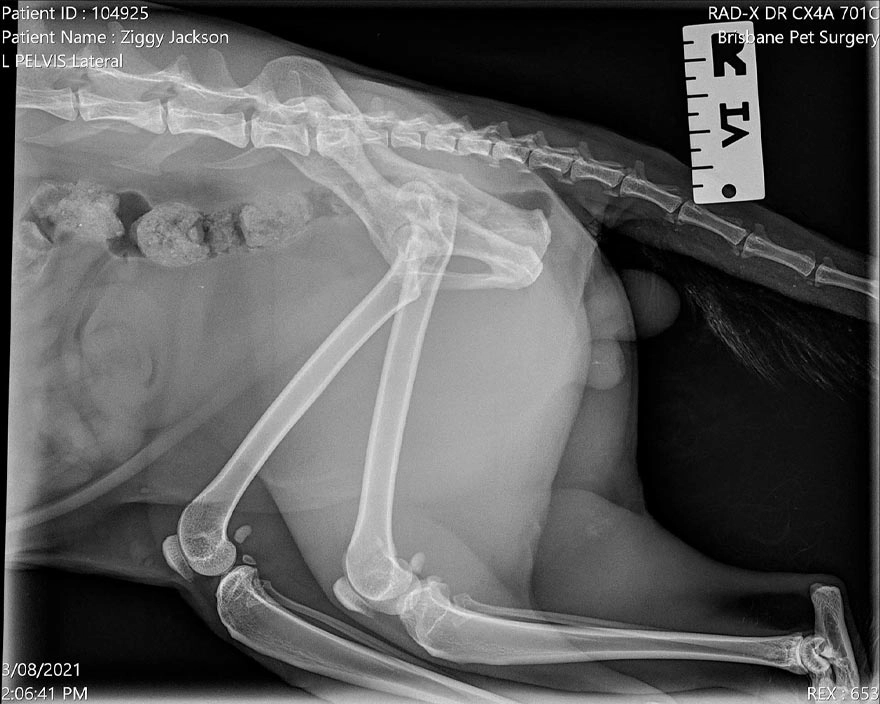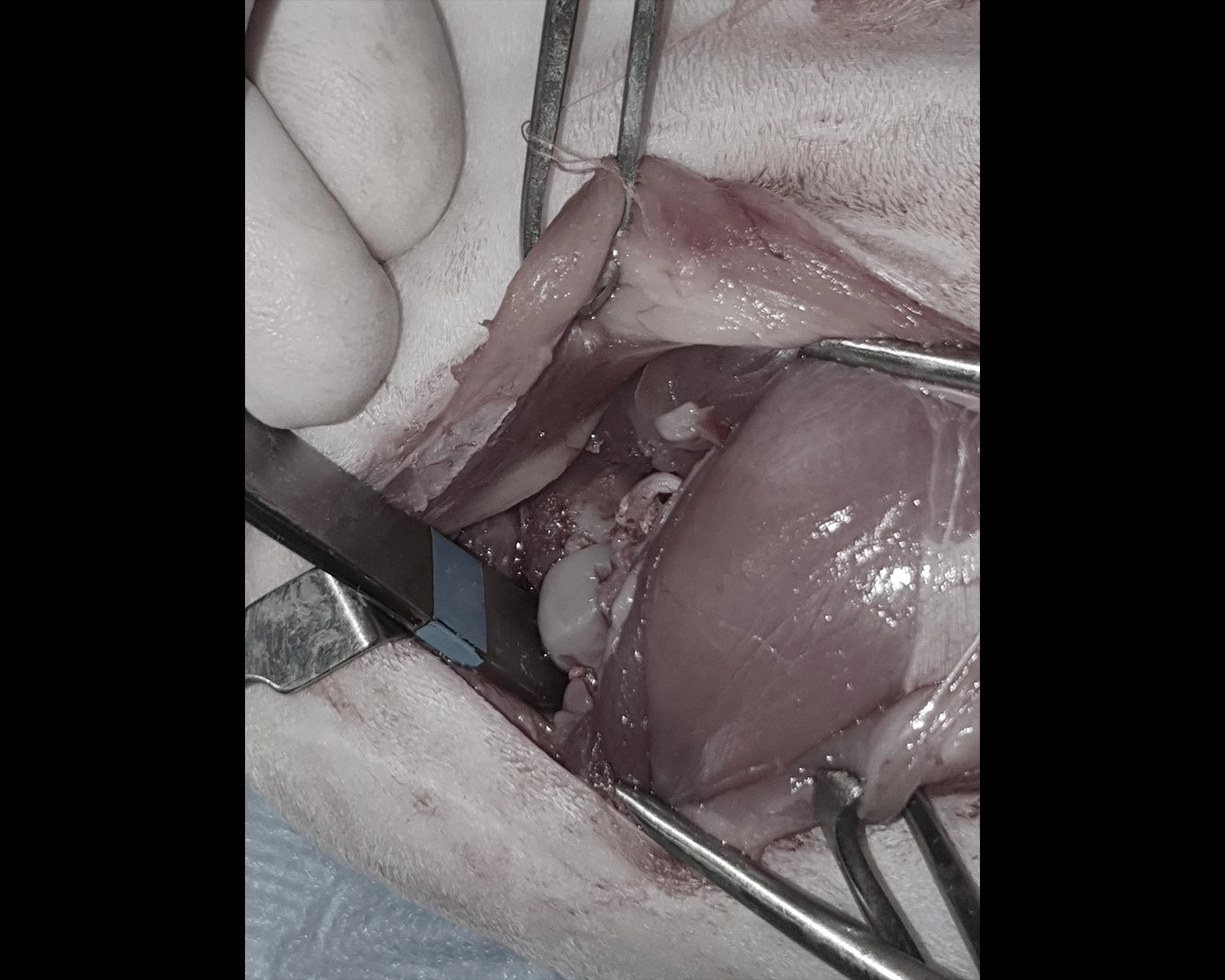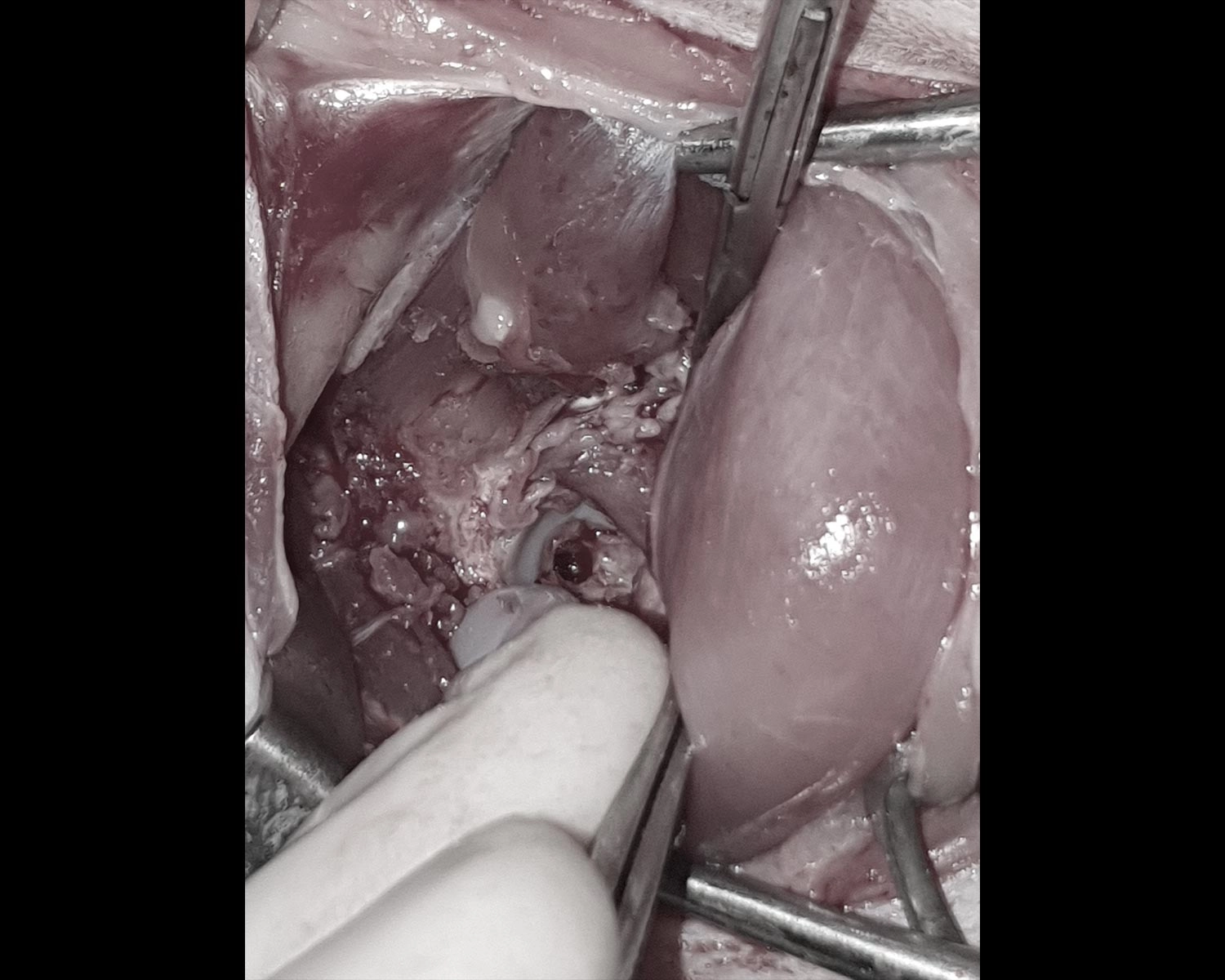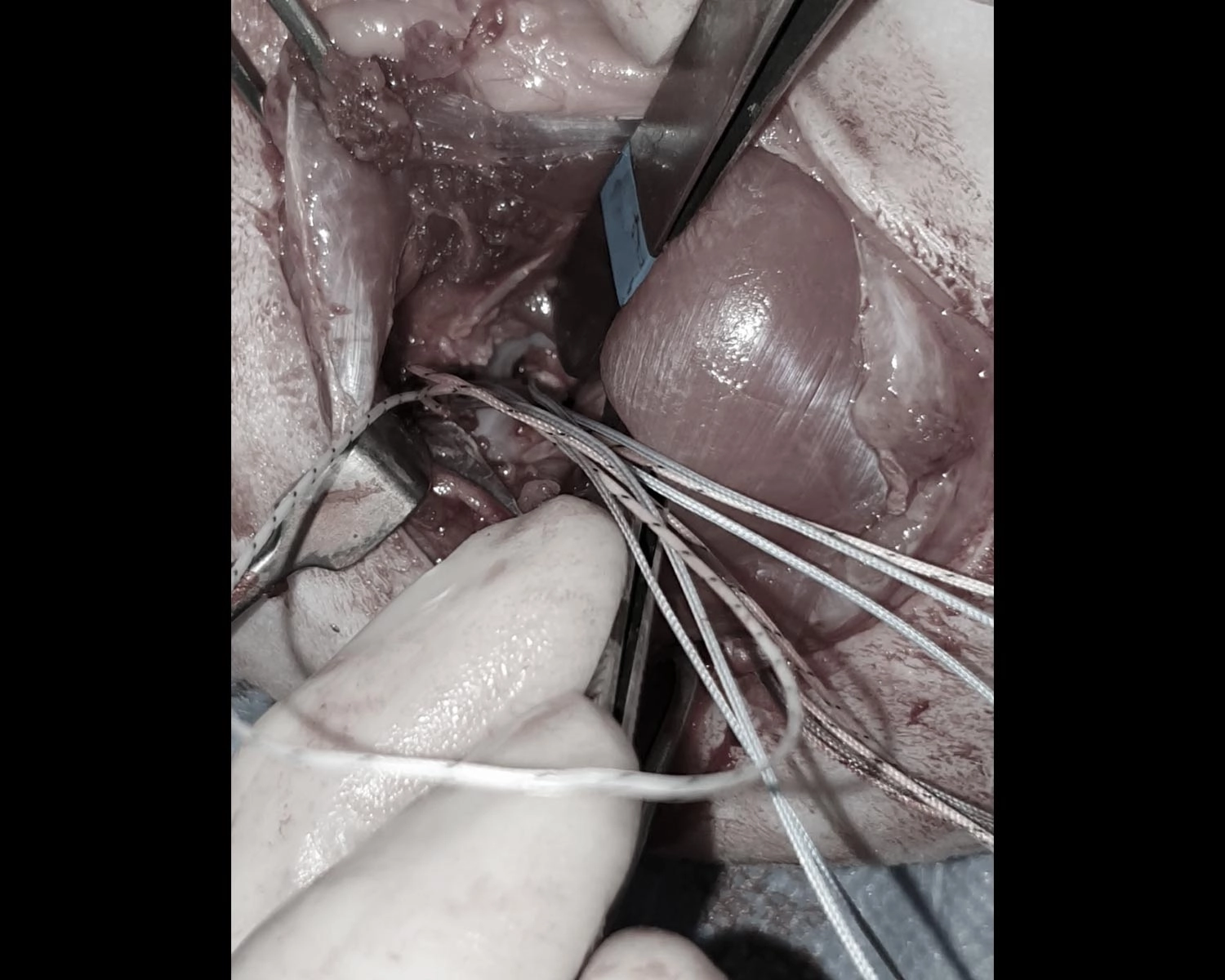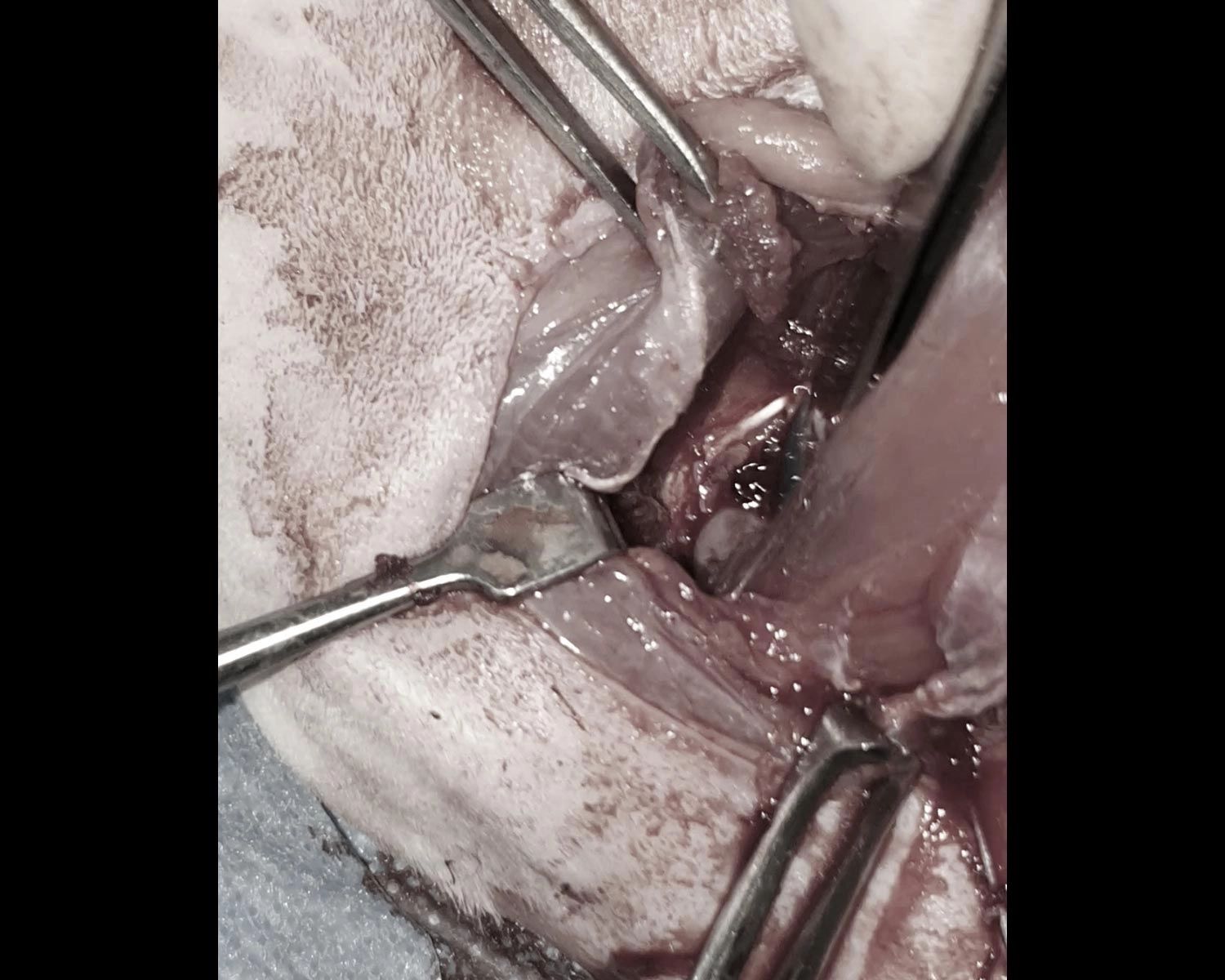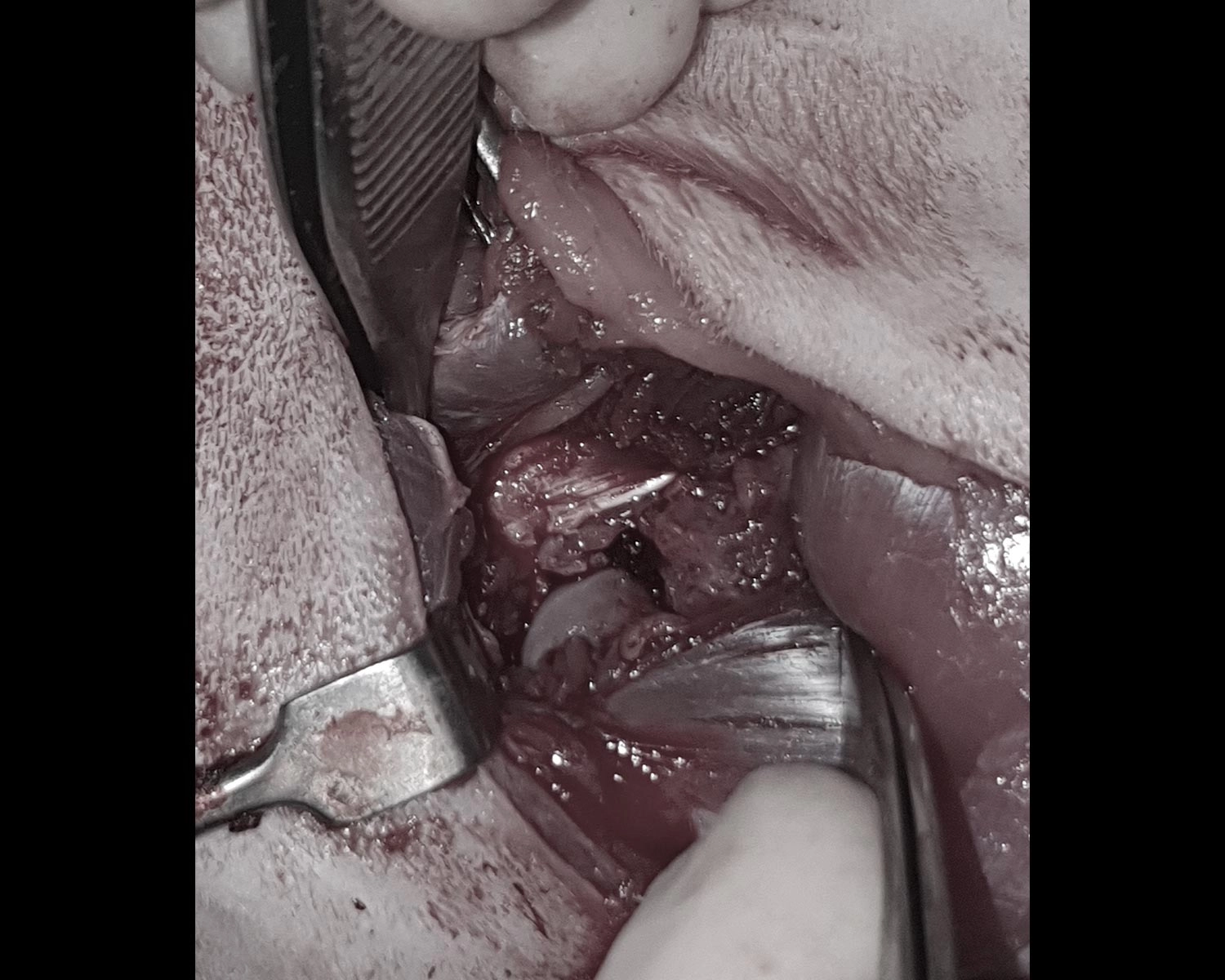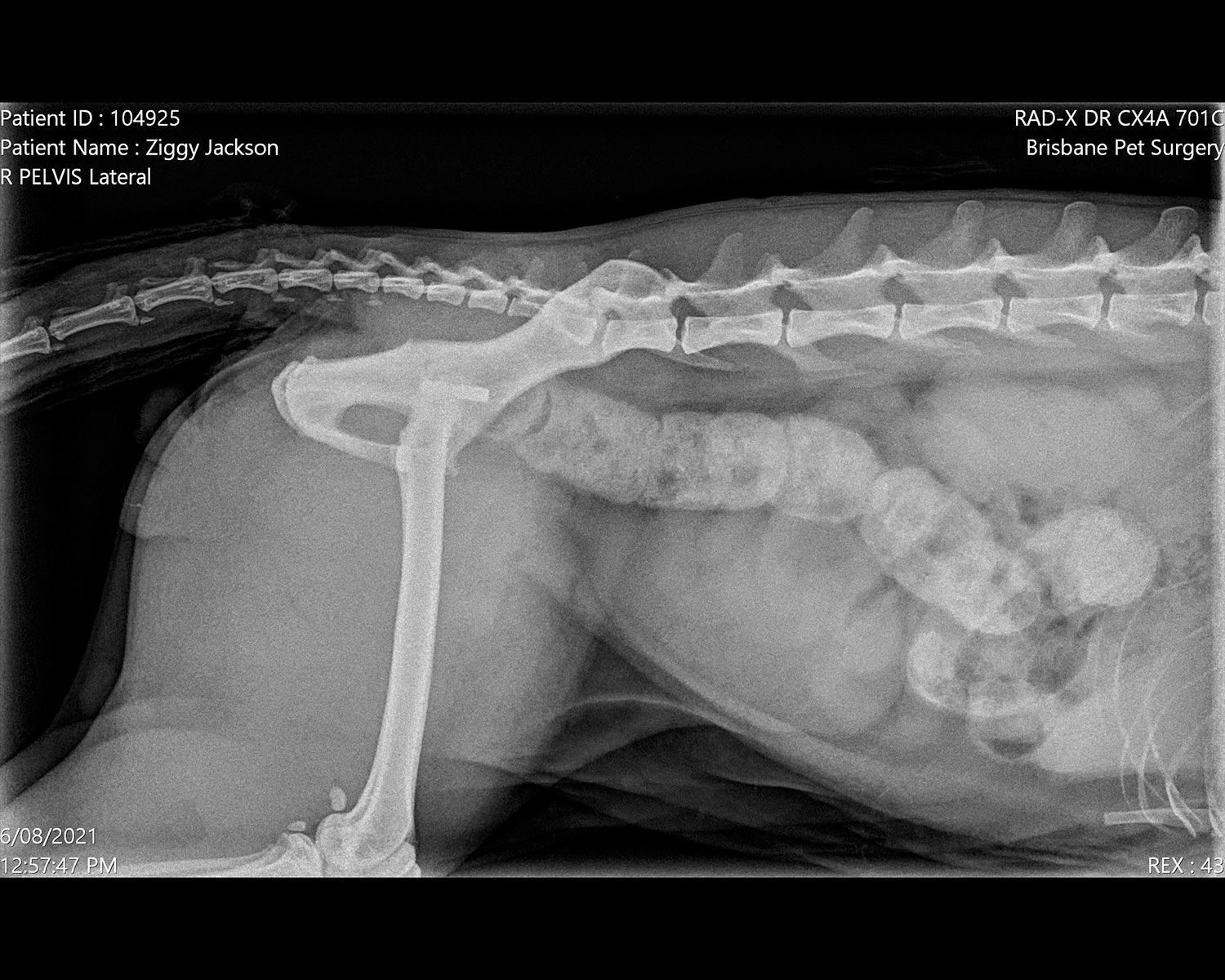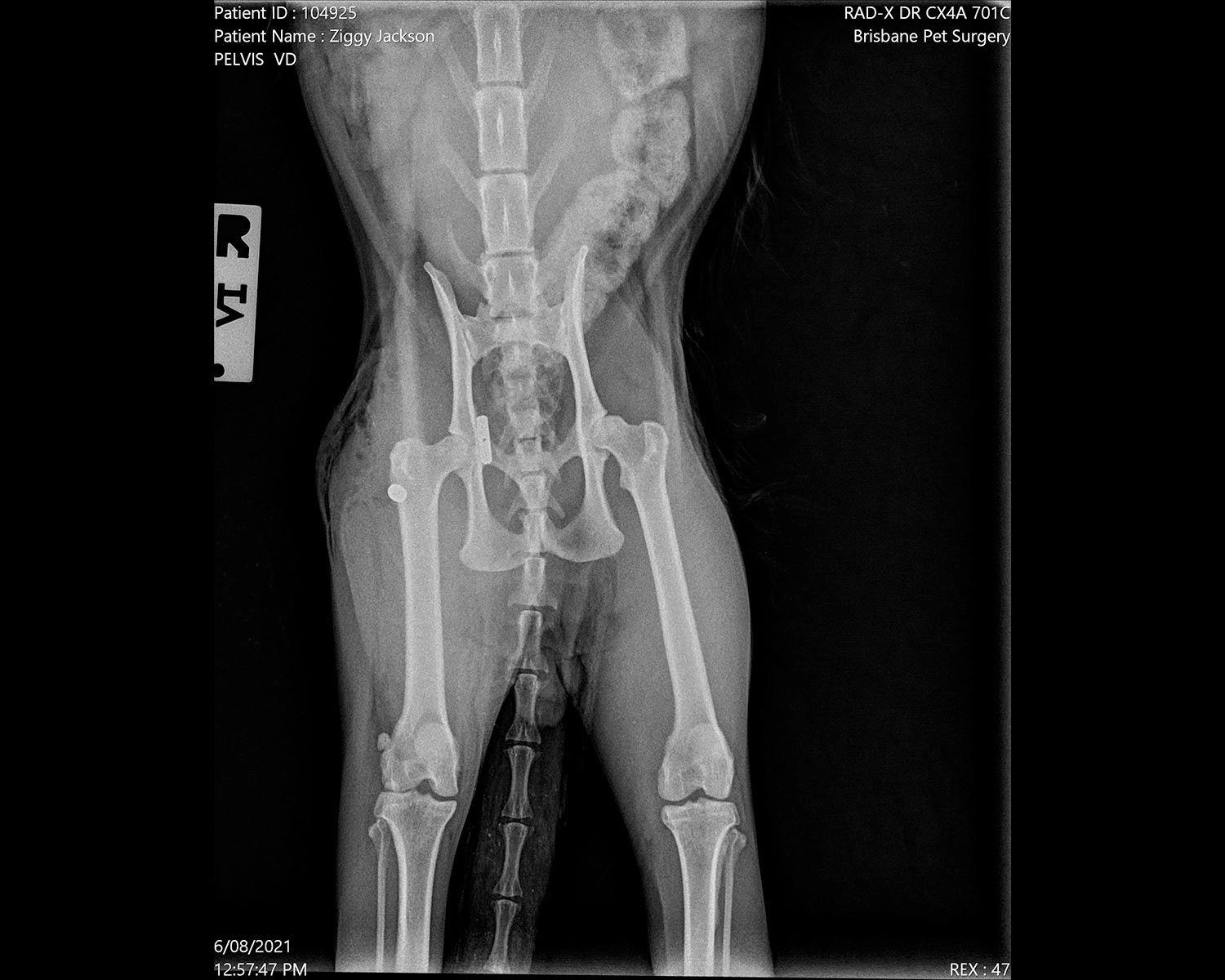Ziggy – a 4 month old Rag Doll Cat with a Right Hind Dislocated Hip
After presenting to the clinic with hind leg lameness, x-rays revealed that Ziggy the rag doll had managed to dislocate his right hip.
How are dislocations treated?
One way to treat a dislocation is by removing the head and neck of the femur all together so that it’s no longer connected to the pelvis. This stops the femur and pelvis bones from coming into contact with each other, whilst all the muscles are still able to provide sufficient support to the joint. This is, however, what’s known as a salvage procedure – the better option is to fix the dislocation. This is because removing the femoral head and neck (FHNE) doesn’t guarantee pain-free results – plus, recovery tends to take months rather than weeks.
The preferable way to treat a dislocation is to fix it using a toggle and thread system. This involves a toggle being placed on the inside of the pelvis, through the acetabulum, and a thread being placed through the head and neck before being tied on the outside of the femur to hold he femoral head in place. When a woven and non-stretch material that is extremely strong has been used (like Anthrex Fibre Wire), this method usually works fairly well.
After being admitted, Ziggy was placed onto IV fluids via a catheter, induced with 02/ISO gas via a mask and was intubated.
We opened the skin over the affected hip area, then removed the superficial gluteal from the greater trochanter and located the dislocated femoral head. After locating and cleaning the acetabulum, we placed a 3.2mm drill hole through it at the insertion point of the round ligament. After widening this hole, we placed Anthrex Mini Fibre Wire through the toggle, the proximal femur and the acetabulum. We then replaced the femoral head into the acetabulum, pulled the fibre wire tight and secured it using a 4-hole button.
Absorbable sutures were used to close up the joint capsule and muscles, then absorbable ford interlocking was used to close the skin.
X-rays of Ziggy’s pelvis at a later date showed that the surgery had been a success. He was put on 6 weeks of cage res followed by 6 weeks indoors, after which he was allowed to return to his life as an outdoor cat.
Cost
At Melbourne Pet Centre, this procedure typically costs between $2000 and $2700, which is more affordable than what a referral centre would charge for FHNE removal and far less than what they would charge for the toggle and thread system. In Ziggy’s case, his surgery cost $2,060 (this price also included desexing).
Procedure photos for recent case
